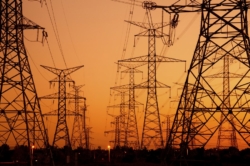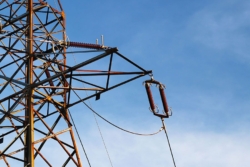When things go wrong and your normal electrical supply is interrupted, you will need an emergency lighting system you know you can trust. Whether from a utility outage or a failure somewhere within your building, your facility is required to have emergency egress lighting in the event of a power failure. But there are several options for powering these emergency lights, one of which is a central battery emergency system. Read on as we shed some light on what a central battery emergency system is capable of, why you should consider one for your own facility, and more.
What is a Central Lighting Inverter System?
A central lighting inverter system, is an alternative power supply responsible for powering all of your emergency lighting from one single location. In short, this means that each of your emergency and exit lights does not require its own battery or source of backup power. Instead, your system relies on the central battery to provide power, even in the event of a complete external power failure. The UL924 Standards and NFPA 101 require a 90 minute backup runtime for a central inverter system. They are required in most if not all new commercial buildings.
Comprised of one or more batteries, central battery emergency systems are capable of delivering as little as 24V or in excess of 240V to your lighting. Additionally, there are two types of central systems to consider, maintained and non-maintained.
Maintained systems are designed to be continuously lit, continuing to work even in the event of a failure. Non-maintained systems are designed to only turn on when a power failure occurs.
The Benefits of a Central Battery Emergency Lighting System
The main function of a central battery emergency system is also its greatest benefit: sustaining lifesaving emergency lighting in even the most demanding industrial, commercial, and other public environments. These systems offer protection for both your personnel and the public to ensure your business remains a trusted member of the community.
There exists a wide range of central battery emergency lighting supply and test systems to ensure your facility’s unique dependable energy supply needs are met. Standard products include AC/AC static inverter systems, and more compact units for smaller installations.
Central Lighting Inverter Systems vs Self-Contained Emergency Lights?
While a central lighting inverter system may be more expensive to install in the short term, it remains one of the most popular choices for emergency lighting due to a wide range of benefits over self-contained emergency lighting.
Temperature One major benefit a centralized system has over self-contained options is its resilience to temperature fluctuations. In a central battery set up, each emergency light does not require its own battery, meaning they are less susceptible to temperature changes. Rather than having to carefully monitor and regulate the temperature across your facility, or purchasing specialized batteries for each light, you will only have to do so for one centralized location, lowering both costs and hassle.
Testing The testing of a central battery emergency system is also superior to that of self-contained lighting. Central monitoring makes it possible to monitor each lighting circuit and light individually from one location during your monthly and annual testing processes. Many central battery systems also include highly sophisticated testing configurations and alarms to ensure you remain compliant and your system remains operational at all times. Emergency systems located all around facility can be time intensive to inspect and test each of the individual units. Intruding on tenant spaces frequently is a nuisance for non central emergency lighting systems.
Life Span and Maintenance Costs
Centralized battery systems or central lighting inverter systems also take the win when it comes to the system’s life span. Such centralized systems are designed to last ten or more years, while self-contained lights generally max out after an average of four years.
Over the lifetime of your facility, this reality can result in monumental cost reductions in terms of central inverter maintenance and system replacement.
Work With Lighting Inverter Supply for Your Emergency Lighting Battery System Needs
Our team of experts is available for technical review of specifications, sizing assistance, voltage selection, installation planning and runtime calculations. If you have questions about a central inverter system product, please do not hesitate to contact us today! You can do so by filling in the appropriate contact form, by calling us at (844) 501-1887, or connecting with one of our product specialists directly in the chat box on our site! https://www.lightinginvertersupply.com






